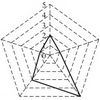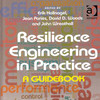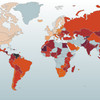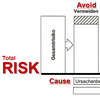This simplified resilience assessment for road projects was presented at the XVIth World Winter Service and Road Resilience Congress in Calgary in February 2022. We call this method the 3R-method because we use three Rs, robustness, redundancy and recovery as a measure of resilience.
A resilience tool for roads
Norway has been using risk and vulnerability analysis for community planning for some 30 years now, ever since the term societal safety and security was coined in the mid-90s. The Norwegian Planning and Building code requires that all development projects, including roads, undergo a risk and vulnerability assessment in order to investigate the impact a project might have on societal safety and security.
While risk and vulnerability assessments are used in road planning in Norway on a regular basis, the Norwegian Public Roads Administration or NPRA for short needed a tool that was specifically tailored towards roads, and the particulars of the Norwegian road network. Consequently, a simplified resilience assessment was developed for assessing road projects in Norway. The method is called the 3R-method because we use three criteria, robustness, redundancy and recovery as a measure of resilience. The three critera can be visualized very similar to some of my previous research that I have described in earlier posts.
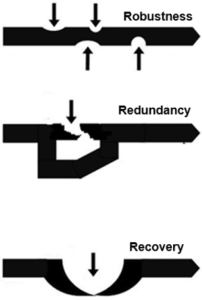
A sparse transportation network
Norway’s transportation network is in large part a sparse network, with few links and few modes. I like to say that much of mainland Europe has what I call a free network, whereas Norway has what I call a constrained network. Much of the country is served by road only, and more often than not only one road. If disrupted, there are few if any alternatives.
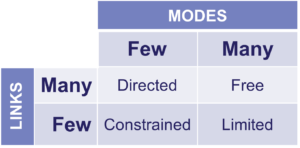
Thus, for societal safety and security, roads become crucial. This is why the NPRA developed this method. It is a qualitative assessment, done by an expert group.
3R explained
The idea behind 3R is to first determine the importance of the road project, be it local, regional or national, and then score the level of impact of the project on robustness, redundancy and recovery on a scale ranging from very negative to very positive. These individual scores are added up to total score, thus allowing for comparison of project alternatives, which could be minor differences within the same project proposal, or totally different project proposals.

Now, the score itself is not the final answer. What is more important, since this is a qualitative assessment, are the verbal arguments describing the impact, because they provide the actual decision support. That narrative is what matters most.
Level of importance
When it comes to importance, this is what separates local from regional from national. The issue here is to determine which critical services and businesses that are affected by the road project and how far the impact reaches. In our assessment criteria we decided that a project should support the military and in particular military supply routes in order to be nationally important.

Level of impact
In order to determine the level of impact and finding the right score, below are some of the key questions that we use. Robustness relates to the physical state of the road and the ability to withstand stress, be it natural hazards or traffic load. Redundancy relates to the existence of alternatives, and not merely the existence but also their suitability. Recovery relates to how quickly a disruption can be repaired in the short term and reconstructed in the long run.
Looking at Robustness one question may be what standard we are building, for example two-lane highway versus a four or six lane motorway. Looking at Redundancy one question might be to what degree we are introducing new links in the network, are we just bypassing a troublesome location or are there impacts beyond the project area. Looking at Recovery one question is whether a previously narrow and winding road is now replaced by a complex system of bridges and tunnels with a traffic control system added. That is not easily replaced.

Conclusion
Having used 3R for a couple of years now, we have found that the method is a highly flexible and multi-purpose tool. It can be used for new projects, existing infrastructure and value engineering.
3R adds value to the more traditional risk and vulnerability analysis. Specifically, it shows how robustness, redundancy and recovery interact in forming resilience.
3R is a holistic tool that highlights how all choices made early in the project can affect the performance of the road and how the road project contributes to societal safety and security or resilience, positively or negatively, depending on the actual design choices.
Presentation slides
Reference
Husdal, J., Petkovic, G. (2022) A simplified resilience approach for assessing road projects in Norway. Paper presented at the XVI WORLD WINTER SERVICE AND ROAD RESILIENCE CONGRESS, Calgary, Canada, February 7-11, 2022.
Related posts
husdal.com: Analysing road vulnerability in Norway

